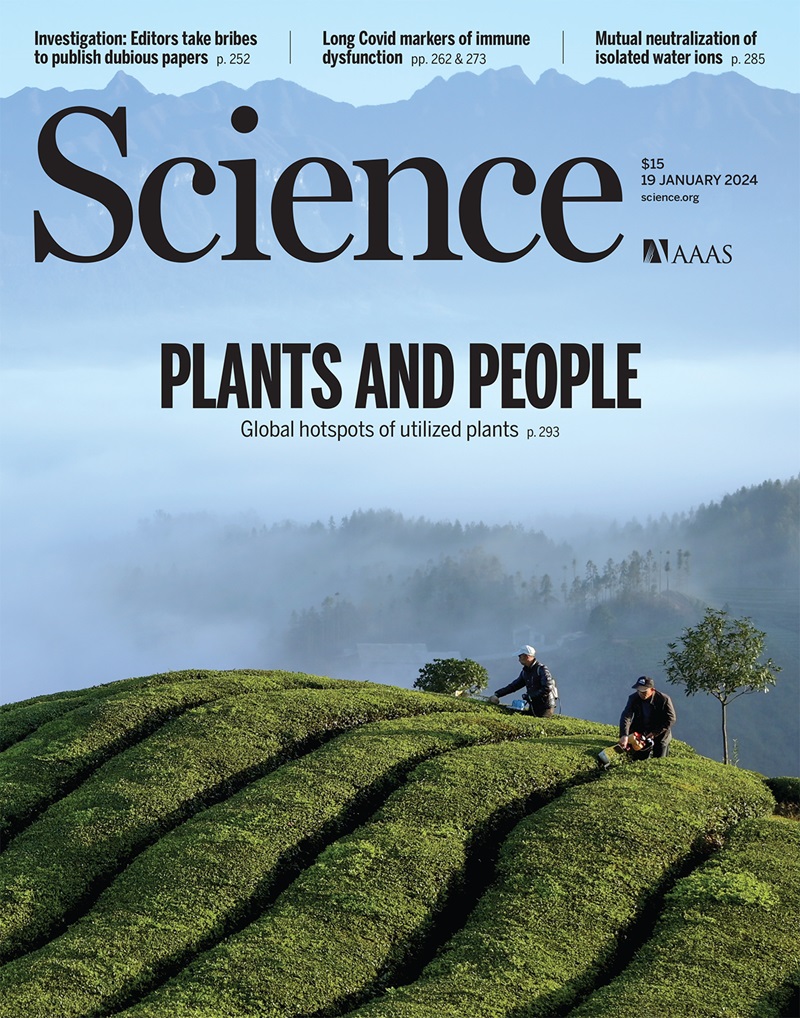古代伯氏疏螺旋体基因组记录了虱子传播的回归热的进化史
IF 45.8
1区 综合性期刊
Q1 MULTIDISCIPLINARY SCIENCES
Science
Pub Date : 2025-05-22
引用次数: 0
摘要
一些细菌病原体已经从蜱媒传播转变为虱媒传播,这通常涉及基因组减少和毒性增加。然而,这种转变的时机仍不清楚。我们对四种古老的复发伯氏疏螺旋体基因组进行了测序,这是一种由虱子传播的回归热的病原体,可追溯到2300至600年前。我们估计,与它最近的蜱传亲戚的分歧发生在6000到4000年前,这表明与人类生活方式的改变(如羊毛纺织品的出现)同时出现。泛基因组分析表明,复发性结核杆菌的大部分进化特征发生在约2300年前,尽管进一步的基因转换,特别是质粒分配,一直持续到约1000年前。我们的发现提供了这种特殊媒介传播病原体进化的直接基因组年表。本文章由计算机程序翻译,如有差异,请以英文原文为准。

Ancient Borrelia genomes document the evolutionary history of louse-borne relapsing fever
Several bacterial pathogens have transitioned from tick-borne to louse-borne transmission, which often involves genome reduction and increasing virulence. However, the timing of such transitions remains unclear. We sequenced four ancient Borrelia recurrentis genomes, the agent of louse-borne relapsing fever, dating from 2300 to 600 years ago. We estimated the divergence from its closest tick-borne relative to 6000 to 4000 years ago, which suggests an emergence coinciding with human lifestyle changes such as the advent of wool-based textiles. Pan-genome analysis indicated that much of the evolution characteristic of B. recurrentis had occurred by ~2300 years ago, though further gene turnover, particularly in plasmid partitioning, persisted until ~1000 years ago. Our findings provide a direct genomic chronology of the evolution of this specialized vector-borne pathogen.
求助全文
通过发布文献求助,成功后即可免费获取论文全文。
去求助
来源期刊

Science
综合性期刊-综合性期刊
CiteScore
61.10
自引率
0.90%
发文量
0
审稿时长
2.1 months
期刊介绍:
Science is a leading outlet for scientific news, commentary, and cutting-edge research. Through its print and online incarnations, Science reaches an estimated worldwide readership of more than one million. Science’s authorship is global too, and its articles consistently rank among the world's most cited research.
Science serves as a forum for discussion of important issues related to the advancement of science by publishing material on which a consensus has been reached as well as including the presentation of minority or conflicting points of view. Accordingly, all articles published in Science—including editorials, news and comment, and book reviews—are signed and reflect the individual views of the authors and not official points of view adopted by AAAS or the institutions with which the authors are affiliated.
Science seeks to publish those papers that are most influential in their fields or across fields and that will significantly advance scientific understanding. Selected papers should present novel and broadly important data, syntheses, or concepts. They should merit recognition by the wider scientific community and general public provided by publication in Science, beyond that provided by specialty journals. Science welcomes submissions from all fields of science and from any source. The editors are committed to the prompt evaluation and publication of submitted papers while upholding high standards that support reproducibility of published research. Science is published weekly; selected papers are published online ahead of print.
 求助内容:
求助内容: 应助结果提醒方式:
应助结果提醒方式:


